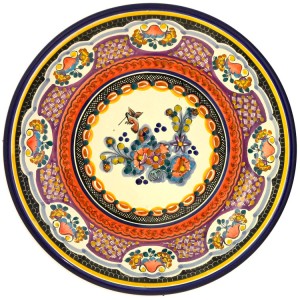The process to create Talavera pottery is elaborate and it has basically not changed since the early colonial period when the craft was first introduced. The first step is to mix black sand from Amozoc and white sand from Tecali. It is then washed and filtered to keep only the finest particles. This can reduce the volume by fifty percent. Next the piece is shaped by hand on a potter’s wheel, then left to dry for a number of days. Then comes the first firing, done at 850 °C (1,560 °F). The piece is tested to see if there are any cracks in it. The initial glazing, which creates the milky-white background, is applied. After this, the design is hand painted. Finally, a second firing is applied to harden the glaze. This process takes about three months for most pieces, but some pieces can take up to six months.
This process is so complicated and plagued with the possibility of irreparable damage that during colonial times, artisans prayed special prayers, especially during the firing process.
Some workshops in Puebla offer guided tours and explain the processes involved. The oldest certified, continuously operating workshop is in Uriarte. It was founded in 1824 by Dimas Uriarte, and specialized in traditional colonial-era designs. Another certified workshop, Talavera de la Reina, is known for revitalizing the decoration of the ceramics with the work of 1990s Mexican artists.
